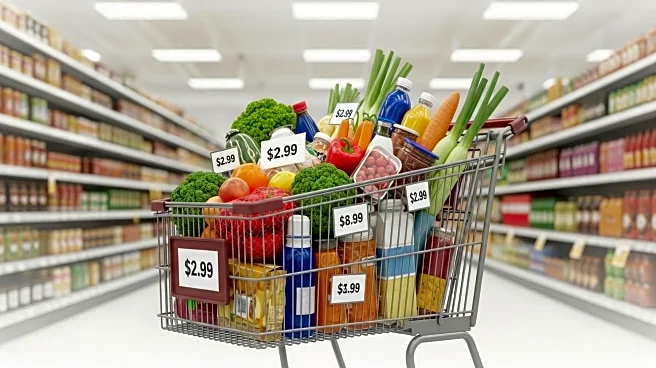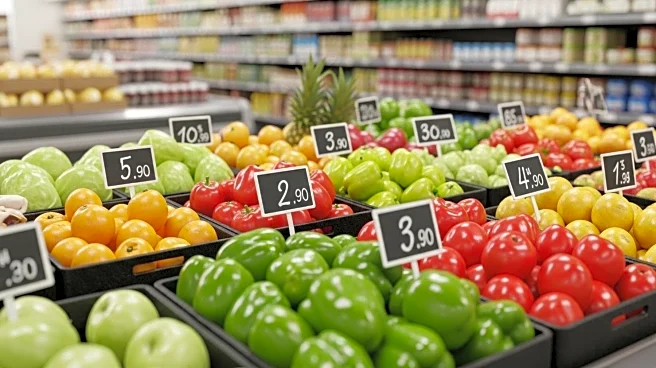What's Happening?
A recent report from the Bureau of Labor Statistics highlights significant price increases across tariff-sensitive goods in the U.S. The 'food at home' category experienced its largest monthly gain since August 2022. Key items affected include roasted coffee, uncooked beef steaks, and eggs, with price hikes of 21.7%, 16.6%, and 10.9% respectively. The report also notes increases in apparel, motor parts, and energy prices. Inflation remains above the Federal Reserve's target of 2%, complicating economic conditions amid a softening labor market.
Why It's Important?
The rising prices due to tariffs are affecting U.S. consumers directly, increasing the cost of living and potentially reducing disposable income. This situation poses challenges for the Federal Reserve, which must balance inflation control with economic growth. The price hikes could lead to decreased consumer spending, impacting businesses and potentially slowing economic recovery. The situation underscores the broader economic implications of trade policies and their direct impact on everyday goods.
What's Next?
The Federal Reserve faces a critical decision on interest rates, with market speculation suggesting potential rate cuts. This decision will be closely watched as it could influence economic stability and consumer confidence. Additionally, businesses and consumers may need to adjust to the ongoing price increases, potentially leading to shifts in spending habits and business strategies.












